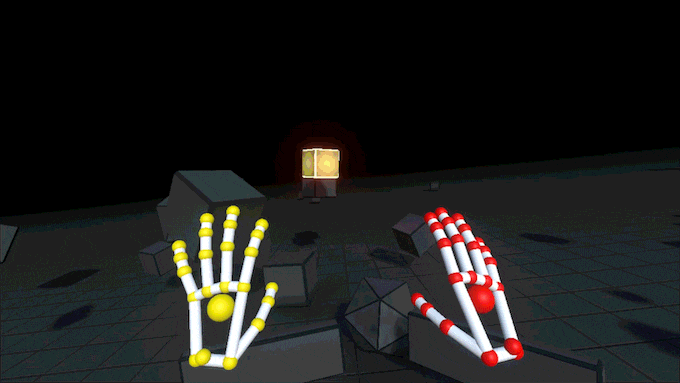Back in 2012, Leap Motion seemingly came out of nowhere with a crazy hand-sensing gesture controller that looked like something straight out of Minority Report.
Alas, the product landed with a bit of a thud. Buggy and inaccurate, the first build just wasn’t as good as most had hoped. Within two years, they’d sold just 500,000 units.
The product has made a bunch of small steps since — but today it’s making one big leap. Aiming to make the Leap Motion good enough for seamless use in virtual reality, the company is shipping new hardware and software that drastically improves the experience.
Dubbed the “Orion” release, today’s news is a two-part thing:
- On the hardware front, the company is shipping a new, lighter, slimmer build of the Leap Motion sensor. Before you bust out the wallet, though, a heads up: they’re not selling one-off developer units at the moment. The units they’re releasing today are meant for AR/VR headset makers to build into their gear. But don’t worry — though it’s technically slightly better, developing for the new build should be a pretty transparent experience, with any spec differences handled automatically by the new SDK. Speaking of which…
- On the software front, Leap is shipping a beta build of their new SDK. The company claims that its “radically” improved — it’s faster, smarter (working out things like the likely position of fingers that may be obscured by your palm/other fingers, rather than just pretending those fingers don’t exist), and able to sense hands that are a full arm’s length away from the sensors. A bit surprisingly, this new SDK will work with existing Leap hardware.
We stopped by Leap HQ to give the new software a spin — and, well, it’s pretty damned impressive. Like many, my initial experience with the Leap when it first shipped was a bit lackluster; this new build, while not perfect, is much closer to the experience I expected.

Leap demonstrated the new software in a demo world they’ve aptly dubbed “Blocks” — an infinite chamber filled with blocks that the user can pick up and toss. With a quick pinch gesture, new blocks are spawned on demand. By turning your left hand toward the sky, a dial interface appears that lets you select a new shape to spawn; turn your right hand upward and lift it toward the ceiling, and the blocks begin to float as gravity is cranked toward zero. It’s perhaps best shown, rather than told — so check out the video up top.
As I’ve been saying for years, I’m still quite convinced that hardware controllers will play a pivotal role in virtual reality — particularly in the early days. But this is the first time that I’ve seen hand sensing stuff reach the point where I can imagine using it regularly in VR — using it to poke around interfaces, grab objects, open doors, etc. Don’t throw out the PlayStation Move or HTC Vive controllers just yet, but start considering how to bring the player’s own hands into the mix.
If you’ve got a Leap Motion developer unit handy, dust it off and give this new build a spin.
